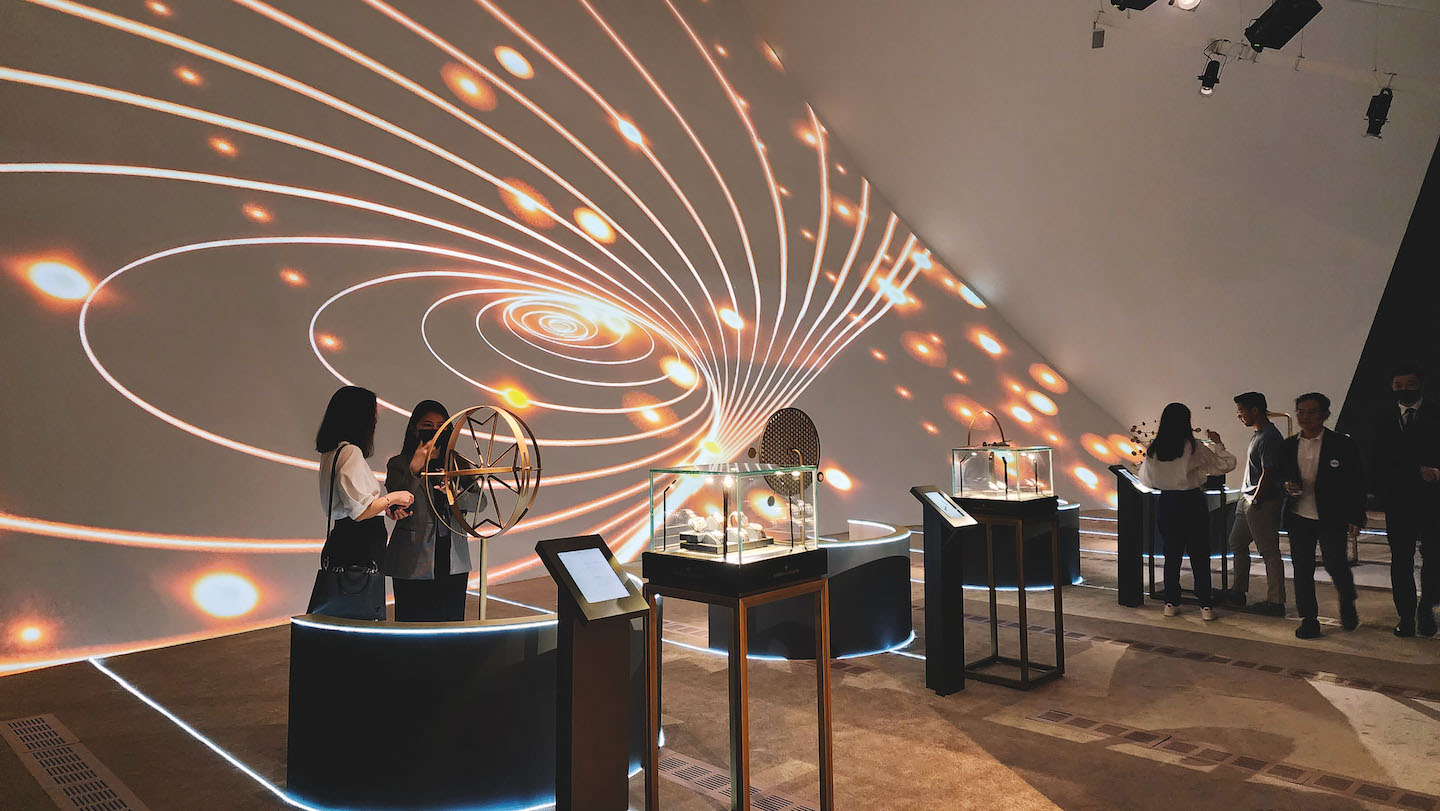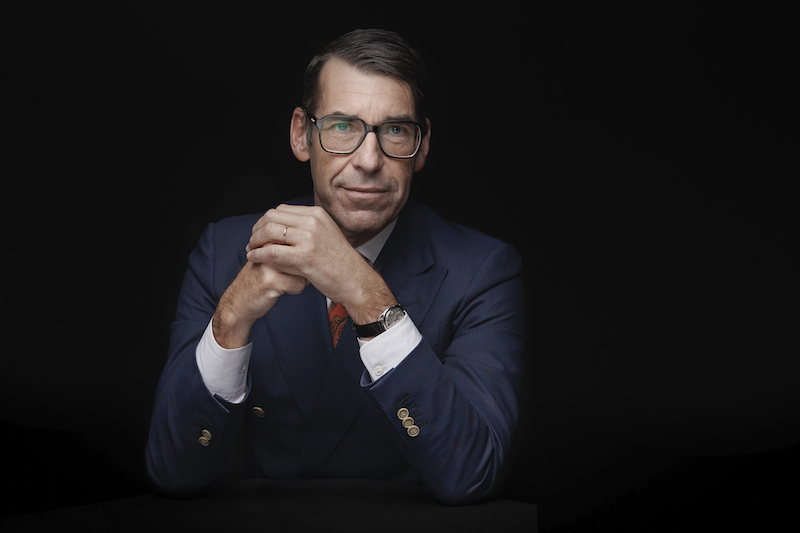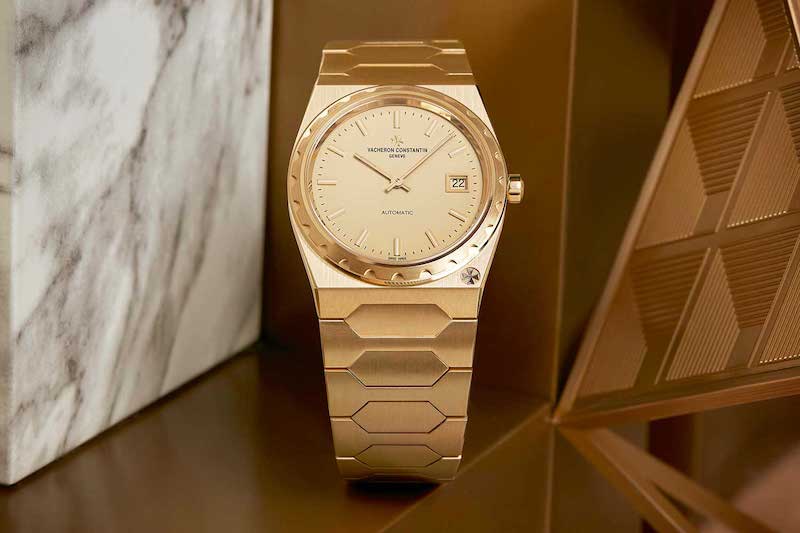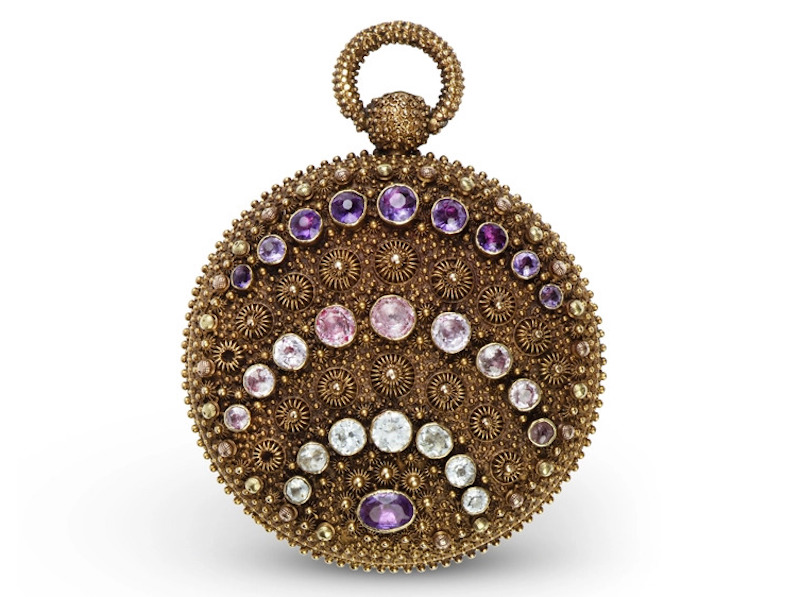
The Anatomy of Beauty is intended to showcase Vacheron Constantin’s passionate dedication to decorative arts and its relationship with complex timekeeping (All photos: Vacheron Constantin)
For his trip to Singapore to attend Vacheron Constantin’s new exhibition The Anatomy of Beauty, its heritage and style director Christian Selmoni chose to wear a 38mm tourbillon from the maison’s Les Collectionneurs series. This continually evolving collection consists of rare watches carefully selected by the heritage department and restored according to the rules of art within the manufacture, allowing enthusiasts the chance to possess a vintage Vacheron Constantin timepiece.
Selmoni’s watch is from 1992, which is not very old at all considering the maison celebrates its 267th anniversary this year. But, according to him, it perfectly captures the zeitgeist of the time it was made — especially its diminutive case size, which was what customers wanted back then. The other watch he has brought with him is the Historiques American 1921, also emblematic of the period it was made in — the Roaring Twenties. It boasts a bold aesthetic matched with the post-war prosperity and flamboyance of the time. Selmoni’s watch, in yellow gold, is no longer in production, though.
Although the maison’s ability to flawlessly express the sentiment of the day is not quite the objective of its new exhibition at the ArtScience Museum, it is very much the impression one gets when touring the remarkable display. Named after the theme of the year adopted by the maison, The Anatomy of Beauty is intended to showcase Vacheron Constantin’s passionate dedication to decorative arts and its relationship with complex timekeeping. But in combing through its archives for pieces to be included in the showcase, Selmoni says what has become quite evident is how attuned the maison has always been to the inclinations of the day while remaining true to its spirit.
christianselmoni.jpg

“Watchmaking doesn’t really follow trends as they are fleeting, a watch is forever,” says Selmoni. “But what we did was to express the feeling of the era in which the watches were made. In the 1990s, case sizes were small. In the 1920s, what people were looking for was different. In selecting the pieces for the exhibition, we spent a lot of time searching through our private collection to showcase the relationship between the decorative arts and watchmaking. But it is also a showcase of how watchmaking has evolved over time along with its consumers.”
The Anatomy of Beauty is split into three sections. We would recommend starting with the Heritage area, which traces Vacheron Constantin’s history in the business. The advent of the 20th century witnessed a major upheaval in watchmaking. Already appearing on women’s wrists as jewellery, wristwatches gradually supplanted pocket models to become widespread and democratised as an indispensable instrument in daily life. By then renowned for the impeccable quality of its simple or complicated calibres, Vacheron Constantin from then on initiated a tradition of continual innovation in the architecture of its special-shaped “form” watches and their embellishment.
Artistic crafts are given pride of place, with a vast range of styles made possible by techniques such as guilloché, enamelling, miniature painting, gem setting, lacquering and openworking. These skills, inherited from the past and constantly enriched, as well as the most accomplished technical mastery in the field of mechanical watchmaking, constitute the very essence of the maison. The timepieces from its heritage encompass more than 200 years of creations and technical excellence.
A highlight from this section is a pocket watch made in 1822. It is an excellent illustration of the Rococo period, which inspired both the Mannerist grottos of Tuscany in the 16th century and the artisans at work on models such as this pocket watch. To create this relief decoration in a solid gold case, the engraver used the pounced ornament technique, which consists of carving out domes, beads and rosettes, which are then smoothed down with a file. A subtle colour-gradient setting with amethysts then adds depth to the sea urchin motif.
historiques.jpeg

In more contemporary history, the Tour de l’lle was created to celebrate the manufacture’s 250th anniversary in 2015 and features an eye-boggling 16 complications in a single timepiece. Only seven of these watches were made, making this a rare chance to see one in real life. Taking design engineers and watchmakers over 10,000 hours of research and development to create, this masterpiece of horological technique is named after one of the maison’s historical sites, the Quai de l’lle.
The Science and Complication room manifests the watchmaking expertise that Vacheron Constantin has perpetuated since its founding. Illustrated through five horological complications — tourbillon, split-seconds chronograph, retrograde, perpetual calendar and minute-repeater — this section is the most interactive of the three, plunging visitors into the science and engineering that underwrite the maison’s high-complication watches. Designers from Hong Kong-based art studio CityShake have created a video installation for this space based on the five movements, as well as their interpretation of the complications in the form of smaller installations that visitors may touch and feel. There is also a section in this space that showcases how the various parts of a watch movement are skeletonised, which you can participate in thanks to the genius of augmented reality.
We recommend that you wind up your visit at the section named after the exhibition itself, aimed at profiling the watchmaker’s extraordinary thoroughness that manifests as much in designers’ aesthetic choices and orientations as the meticulous finishing performed by each craftsperson. All the components of a Vacheron Constantin watch benefit from this particular attention, even those that remain invisible once the movement has been assembled.
In the centre of this space, an installation will aid keen eyes in noting the fine guilloché work on a dial or the gem-set minute track; the contours of the maison’s Maltese cross emblem on bracelet links; a small flame-blued screw serving as a seconds indicator on a tourbillon carriage. The objective here is to showcase how dogged attention to detail is the basis for an anatomy of beauty in which nothing is left to chance.
history_new.jpg

Once you have seen what Singapore-based watchmaker Jordan Raphael is working on in a corner, make sure you spend some extra time admiring Vacheron Constantin’s new Metiers d’Art watch series. The Persian Empire of Darius the Great, the golden age of Ancient Egypt, the Hellenistic period of Ancient Greece and the rise to power of Augustus, the first Roman emperor, are the historical anchor points of this series, which was created in partnership with the Louvre. True symbols of each era, the four artistic masterpieces are at the centre of an exceptional watchmaking show staged by skilled craft makers. We spot the star release of this year’s Watches and Wonders fair too, the Historiques 222. A contemporary reissue of a 1970s era watch, this all-gold timepiece boasts a robust, functional and sporty spirit. Stop and look closer to properly appreciate its monobloc tonneau-shaped case and uniquely grooved bezel.
Since its founding, Vacheron Constantin has distinguished itself with timepieces in which a sense of beauty is expressed through a body of work whose aesthetics are matched only by its perfect technical arrangement. This wonderfully curated exhibition retraces these inseparable links that have consistently characterised the maison’s approach to watchmaking. This makes it a must-see for watch novices and connoisseurs alike.
The Anatomy of Beauty runs until Nov 2 at the ArtScience Museum, Marina Bay Sands, Singapore. Admission is free but pre-bookings on marinabaysands.com are required.
This article first appeared on Oct 24, 2022 in The Edge Malaysia.


